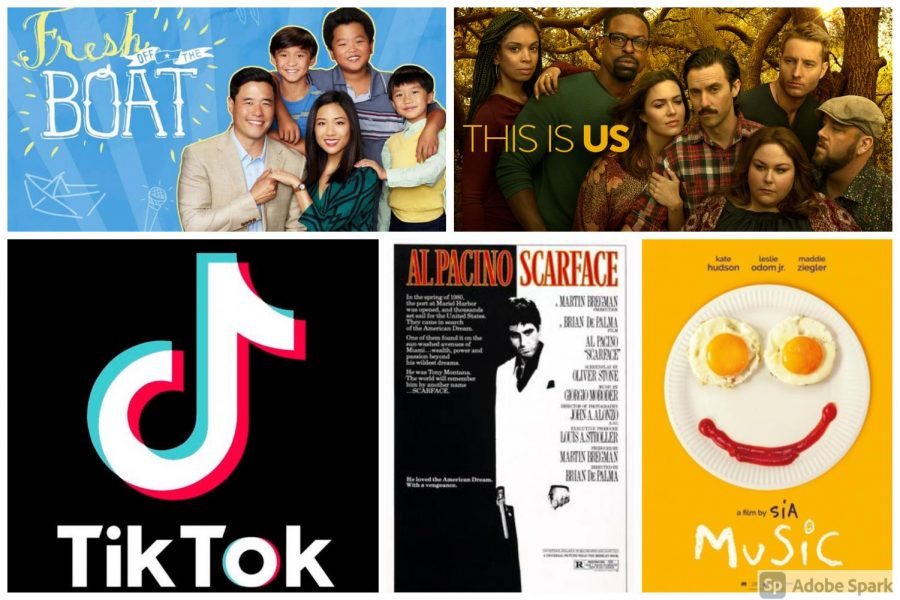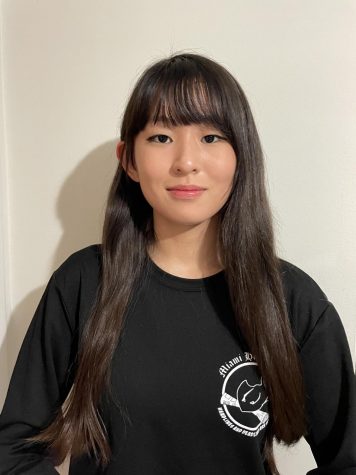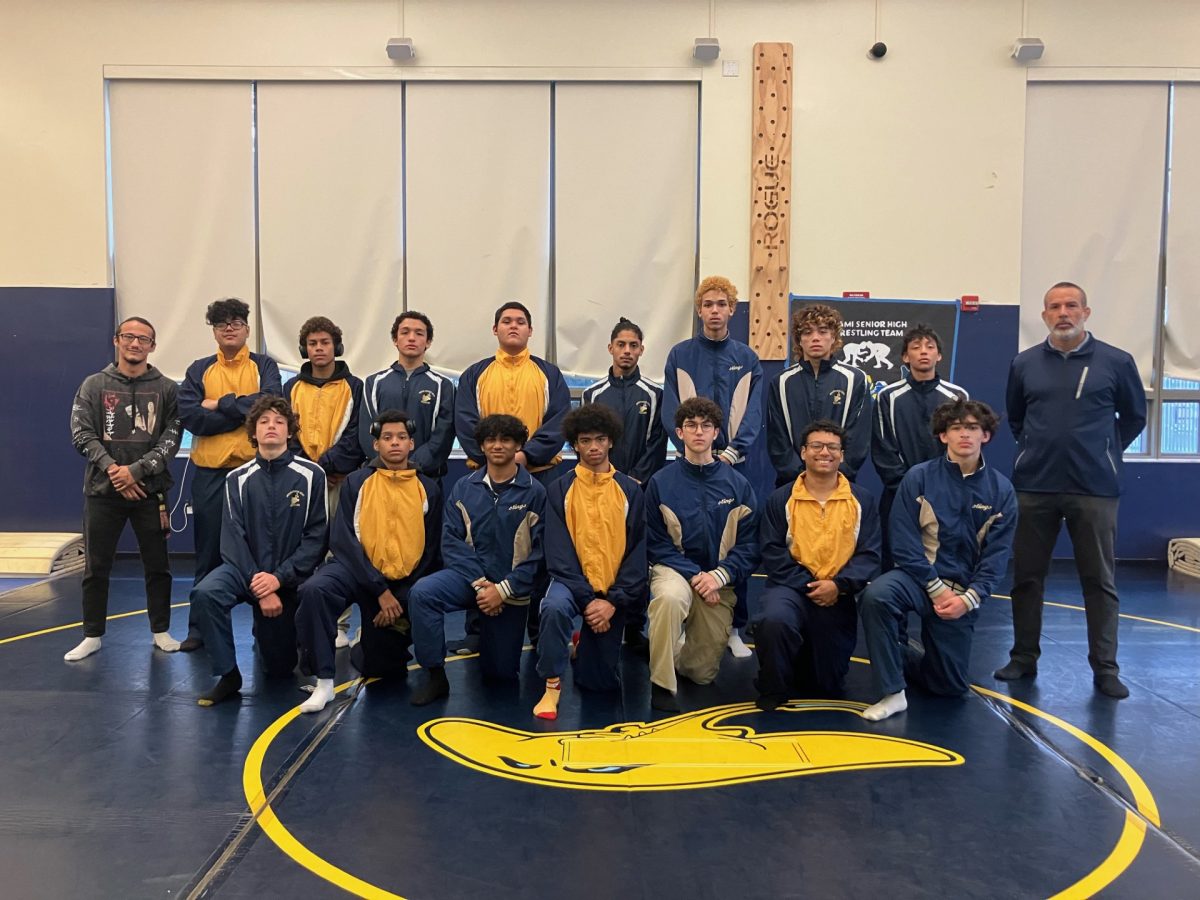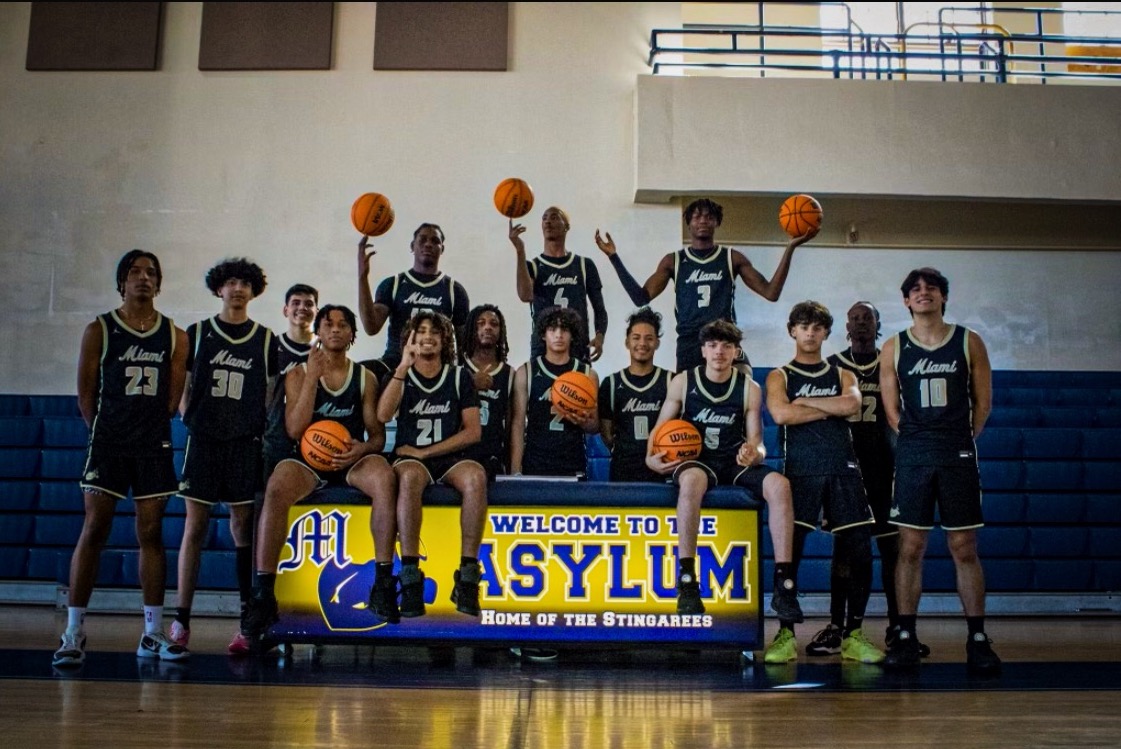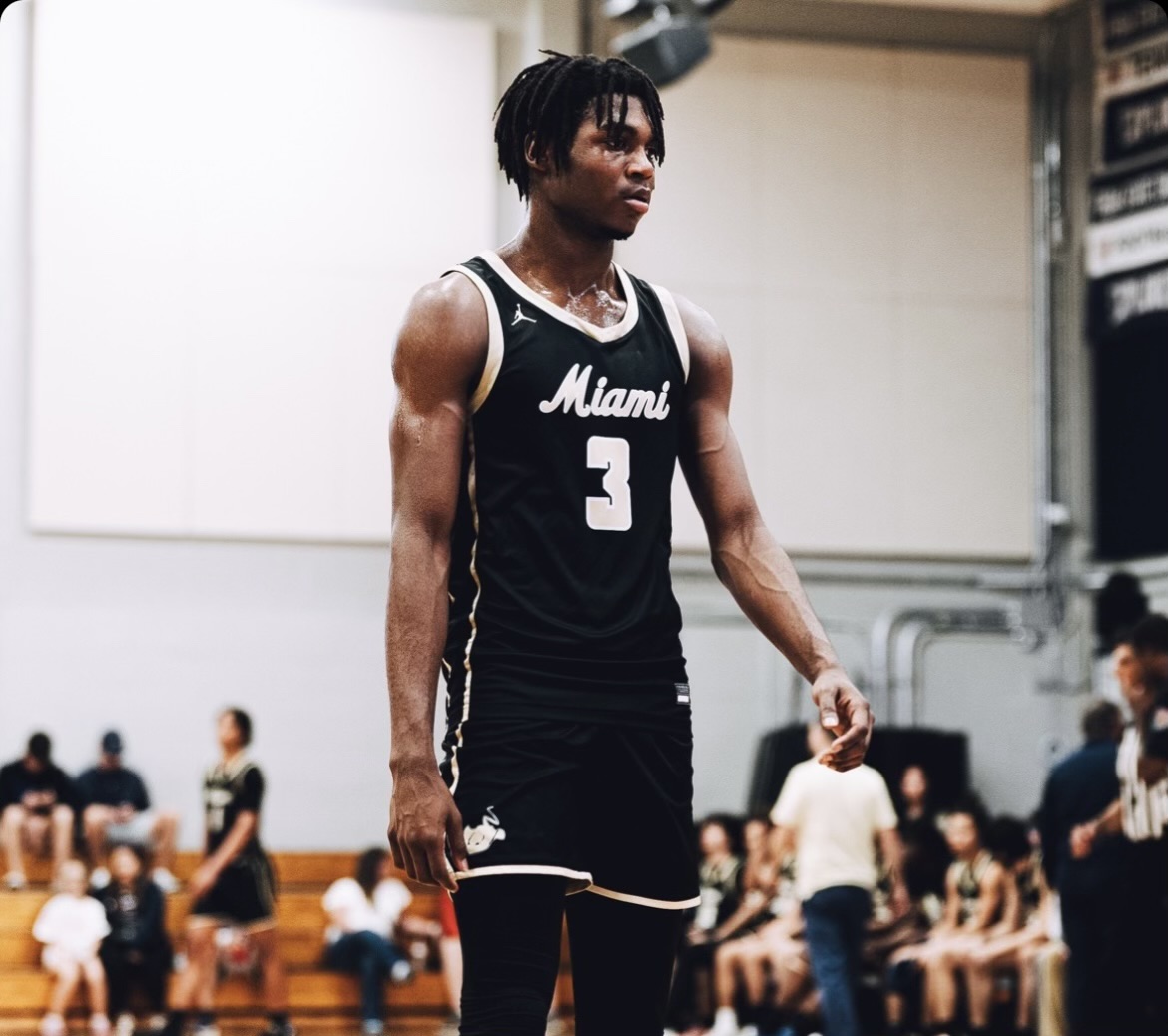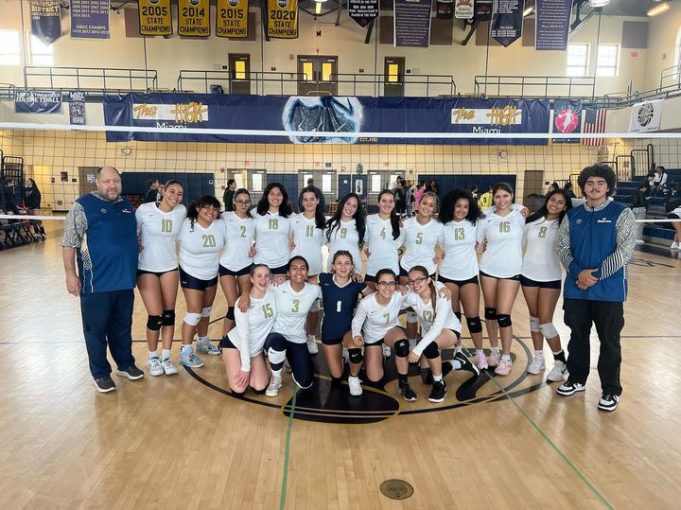“Where Am I?”: Misrepresentation in the Media
December 17, 2020
Growing up as an Asian-American, I have never seen myself on the television screen. The only way I was able to see people who looked like me was through Chinese films my mother would frequently watch. However, when American films included Asian actors/actresses, they were constantly stereotyped as the nerd or the super genius in the class. These stereotypes pushed a false description on all members of the Asian community.
The Asian community isn’t the sole target; many other minority groups have suffered from a lack of and misrepresentation in the media. In Miami High, a school populated by the Latinx community, many students have experienced the effects of being misrepresented in the media.
I Don’t See Myself on the Screen
The media can impact how a person feels towards themselves, and this impact can be caused by misrepresenting or not enough representation. Senior Kiara Delgado said, “As I was growing up I definitely felt underrepresented to the point of wanting to bleach my skin in order to look like the women on screens and magazines, and even when I did see Women who looked like me they were often presented as ‘ghetto,’ ‘ratchet,’ ‘loud,’ or they were oversexualized. As a child this would make you believe that only white people can be classy or successful. That being assertive is disrespectful, uncouth, and passivity is the only way for people of color to get around in life.”
Senior Katherine Ribao said, “I feel like growing up, my culture was never represented well. Every time I would go online, it was like my self-esteem would drop. It was always the non-Hispanic whites that got the attention. They were always the smarter ones or the prettier ones. As a minority, we were always the neglected ones or the last option. As I’ve gotten older, I’ve noticed how much of a bigger issue this is. It’s either we get misrepresented in something or not seen at all.”
However, senior Mariana Cepeda believes she was well represented in the media, but still realizes the media’s shortcomings. “I grew up in Latin America with light skin privilege. As most of the telenovelas, series, and movies on our screens featured people with light skin, I never noticed a problem with the media until I looked at its content from other people’s shoes. My friends come from all ethnicities and races, and I now see that the media we grew up with fomented this toxic environment,” she said.
Growing up in the US, I saw very little Latina representation— let alone brown Peruvian-American representation. I think having someone in the media that looked like me could’ve saved me an identity crisis or two in my childhood.
– Senior Melanie Sousa
The Cause
We must differentiate between misrepresentation and lack of representation. Both issues are very important; however, they both contain different meanings. According to the definition from Dictionary.com, misrepresentation is “the action of giving a false or misleading account of the nature of something.” According to the BBC, representation in the media is “the way aspects of society, such as gender, age, or ethnicity, are presented to audiences;” therefore, a lack of representation is not having specific communities portrayed in the media enough.
Thus, what is the cause of these issues. According to senior Vladimir Somarriba, “Have you ever seen a bug on the street? You may glance at it or think it’s cool but eventually you ignore it. People in general ignore issues or events if it’s not directly affecting them. Call it ignorance or turning a blind eye, it’s the same thing; certain communities are passed over as they are believed to not be significant enough.”
Junior Melissa Elmhorst said, “Internalized white supremacy is more of an extreme to describe the phenomenon, but European culture and beauty standards are very prominent and very much at fault for the lack of representation. Historically, European standards (blue eyes, blonde hair) have been lauded and considered beautiful and acceptable, whereas Black, Asian, Native, Pacific and other minority group’s features are thought of as not-as-beautiful by the public.”
Lack of Representation in the Media
The media has power to spread truth and misinformation; this power can cause viewers of the media outlet to have false views towards a specific community. Media could also push a specific community more than others which might cause other communities to be underrepresented. Students and teachers at Miami High pinpoint different media where lack of representation is the most prominent. Some say it’s worse on social media. Senior Ashley Hernandez said, “It’s become obvious that as long as you fit the standard then it’ll become easier to build a platform. For example, the ‘biggest’ content creators on TikTok are all white people that just do 15 second dance videos, when there’s millions of other creators of different backgrounds that have more creative content, or might just do the same thing, that don’t even have an eighth of the followers that the bigger creators do.”
Others say it’s worse on television. English teacher Ms. Rodgers said, “In order to break through a society that centers on whiteness, most Black people have to be exceptional to be seen as ‘interesting,’ or ‘relatable’ enough to be accepted into mass media. A couple examples include Black-ish, Empire, or This Is Us, where the parents within those shows are doctors, musicians, or financial traders. Those shows uphold narratives and structures palatable to white Americans and make it easier to integrate them into mass media.”
Senior Melanie Sousa said, “Movies and television are what we see the most. We watch TV and movies as kids and then it evolves with us. We are essentially being raised by the TV and it debatably has the worst variety of representation. Because of the nature of acting, the media reuses the same set of palatable actors to play these intricate roles. This often ends up being at the cost of variety and proper representation of minorities. A great current example is singer Sia’s new movie. She cast a fully abled young girl (Maddie Ziegler) to play an autistic character. This received a large amount of backlash from the autistic community for the very insensitive casting and the ignorance that came once Sia attempted to defend herself. Once she took it upon herself to tell the story of an under-represented and misunderstood community, she did not have the same care to follow the message of her own movie and have actual people with the disability as actors.”
Pushing Harmful Stereotypes
The media can push harmful stereotypes onto the community, which can alter one’s perception towards minority groups. Students and teachers at Miami High have witnessed situations where the media have pushed harmful stereotypes. Kiara Delgado said that the media have pushed black people as being “lazy and violent g*ngb*ngers. Hispanics being r*pists, job stealers. Native Americans being savages. Asians being horrible drivers, or overly ambitious and uptight. Jews being greedy job stealers, etc.”
Vladimir Somarriba said, “We all heard the joke of the Hispanics are r*pists and drug dealers, the Asian that loves eating cats, the Black man that loves guns and gangs, or that all Muslims are terrorists. None were good stereotypes and cause great harm in society. Everything said in global media needs to be checked as there are millions of examples of stereotypes ruining society’s perception of a group.”
AP Psychology/US History teacher Mr. Norori said, “Growing up in Miami, I felt the most prominent representation of a Latino representation in the media was Al Pacino’s character of Tony Montana in Scarface. This is troubling considering that Al Pacino, a white Italian American, was portraying a native-born Cuban immigrant and his performance felt more like a mockery. His exploits that drive him to accumulate money and power by any means necessary is an unfortunate representation of Latino and Miami culture. Over the years I would say that the media has deviated from this representation. It doesn’t affect my viewing of such projects, but I still believe the effect has left a lasting mark on our society’s view of El Mariel and Cuban immigrants.”
Freedom of Expression and Ethical Representation
According to the 1st Amendment of the Constitution of United States of America, “Congress shall make no law respecting an establishment of religion, or prohibiting the free exercise thereof; or abridging the freedom of speech, or of the press; or the right of the people peaceably to assemble, and to petition the Government for a redress of grievances.” Using this amendment, the media excuse their actions and words stating they are protected and utilizing their “freedom of expression.” However, it does not excuse the harm their actions and words cause; therefore, there must be a balance between freedom of expression and ethical representation.
Students and teachers express their opinions on how the media can achieve that balance. Mr. Norori said, “I believe that ‘freedom of expression’ is a broad term that needs to be examined with caution. The First Amendment guarantees us many freedoms, one of them being the right to freedom of speech, but it must not infringe on the well-being and privacy of others. Individuals should have freedom of expression, but they must also be aware of the effect it has on others and the consequences that will come if the expression is hurtful or inappropriate. Ignorance is no excuse for hatred and bigotry.”
Melissa Elmhorst said, “It is freedom of expression to post whatever beauty standards one wants to, but just because someone is able to represent a sole group does not mean that they should only post the one group. This is what leads to the lack of representation. All groups should be represented in the media: Black, Asian, Native American, Latin, White, Island Pacific, LGBTQ+, etc. There can be a balance between freedom of expression and ethical representation. No one should be forced to represent a certain group solely because the group is underrepresented. However, if everyone realized that lack of representation in the media, collective effort could eradicate the problem of lack of representation.”
However, junior Marco Vazquez- Perez believes that freedom of expression does not conflict with ethical representation. “They would be defined as ‘everyone can express themselves to their fancy’ and ‘everyone has a voice.’ I find them to be more tied together as opposed to mutually exclusive. I fail to see how they limit each other. Only in an extreme situation would ethical representation limit freedom of speech, which is when there is a limit to the total number of voices, so that each demographic would get an equal percentage. That is a situation in which I would completely side with freedom of speech, as I believe that everyone has a right to express themselves,” he said.
A way that media pushes stereotypes that causes harm is when they portray Asian people, for example in shows, as boring characters that only care about studying and have no social life. A way they portray stereotypes where no harm was caused is when they show Latinos that have a strong sense of the importance of family; some may assume that Hispanic families are very close knit together and that’s not necessarily a bad thing.
-Senior Nicoletta Valencia
Distinguishing Harmful and Comedic Material
In 2015, ABC released a sitcom called “Fresh Off the Boat” (FOB), about the lives of Asian immigrants, the Huang family, in America through a humorous lens. As a member of the Chinese community, I found some of the series comedic as I enjoy laughing at certain stereotypes as a coping mechanism, and some content is relatable; however, just because I find it humorous, I realize that it can be harmful as many people who do not understand the Asian community may form a stereotype that all Asians are like how the sitcom portrayed. But directors and viewers tend to argue that it is just comedy and people shouldn’t take it seriously, causing there to be a faded line drawn between harmful and comedic material.
Students and teachers at Miami High give their opinion on how people can distinguish the material. English teacher Mr. Jimenez said, “I think this is very subjective and realize that you can be comedic without being downright offensive for no reason. I know many people believe we live in a ‘cancel culture’ world but I view it as more of an ‘accountability culture.’ You have every right to say what’s on your mind and try to make comedy but you must also realize that you are not special and that you will be held accountable by people that might feel offended. You can’t have your cake and eat it too.”
Melanie Sousa believes that comedic material should come from a place of experience. “One of the reasons comedians and comedic writers are so proud of their job is that they have the ability to make light of traumatic moments. For some, that’s the basis of their work! The detail comes in only making comedic material over things you have gone through or experienced. As a living example of that experience (whether it be stereotypes, trauma, etc.) you have the authority to make light of it how you choose. I believe it becomes insensitive when you find yourself being entitled to others’ experiences as the punchline of your jokes,” she said.
Senior Christopher Collindres said, “Harmful can be like calling out a group of people in a disrespectful way. For example, CNN might say ‘undocumented immigrants’ while FOX News will say, ‘illegal aliens,’ dehumanizing undocumented immigrants just because in the Library of Congress they use that name. Comedic would be like the Daily Show with Trevor Noah who updates the people with what’s going on in America and the world while making people laugh about it, as he’s a comedian as well. The media have to be careful when they’re putting comedy on a certain issue without angering a group of people.”
Media Becoming More Inclusive
2020 is considered a progressive society where people are now calling out media who are being racist, sexist, homophobic, etc. Students and teachers at Miami High believe the media has become more inclusive of minority groups.
Ms. Rodgers said, “I definitely think representation has become a bit more inclusive in 2020. Communities of color are now demanding to be represented and refusing to be left out. Television shows and writers’ rooms are beginning to include more people of color to tell their own stories. There has been a steady increase in the number of TV news anchors who identify as part of a minority community. I think this is especially important, since a large percentage of adults still get their local news from TV. Increasing representation amongst news anchors helps to normalize people of color within households.”
Sophomore Paola Pomareda said, “With our current generation, differences are starting to be embraced in society. As years have gone by, people and their mentalities have greatly evolved to what our present standards are. Unfortunately, many people continue to face the old ways and turn their back on what we accept today. The majority of the young population has adapted to today’s conditions and standards and are fighting to their fullest capabilities in order to achieve the rights and freedom they deserve. Looking at all the recent events that have occurred regarding minority groups, I can most definitely say that the young generation is stepping up through protests and in social media to spread the word of all that needs to be fixed, including racial slurs, equal pay, and recognition of abuse. A great example is the representation of the LGBTQ+ society, which people are associating with the victory of Joe Biden in this year’s presidential election.”
However, some students believe that the media hasn’t become fully inclusive of minority groups. Ashley Hernandez said, “I think some people have become more inclusive, but still a large part does not accept anything that is in any way ‘foreign.’ I think that obviously there’s more representation now than there was a long time ago, but most of the time they just use the most stereotypical way to represent minorities. Personally, I still haven’t come across a type of media that really gives any minority actual representation.”
Solutions
Students and teachers at Miami High give their solution to the way media can increase representation and give proper representation to minority groups. Junior Samantha Yera said, “The best solution is to simply stop these toxic ways of thinking. Normal is not blonde, white, and straight. Normal is everything and everyone. Hiring people for what they look like instead of their talent is something that needs to end.”
Marco Vazquez-Perez said, “I think that the best solution is to support wholesome, uplifting communication instead of negative, judgmental attitudes. More people will be encouraged to become successful problem solvers, while our society gradually becomes less polarized. As far as race and gender underrepresentation, companies can be incentivized to cater to those groups through alliances with nonprofit organizations. Any decent business would want to add that to their resume/website. I think there is a problem with quotas as a means to solve the issue, as quality is sacrificed for the sake of appeasing the masses. There are both community-level and corporation-level solutions.”
Mr. Jimenez said, “I think consumers should voice what they want to see more. Support the movies you believe in and push for more diversity. When Black Panther came out, I watched it two or three times because I was just in love with the casting and the world created. I followed many of their actors and their roles after.”
Mr. Norori said, “I think the best solution is for media companies to hire as many diverse people as they can. Audiences love original, creative content that moves them, and diversity allows for individuals to speak about their own experiences. These are stories that can bring people laughter, empathy, joy, and hope.”

